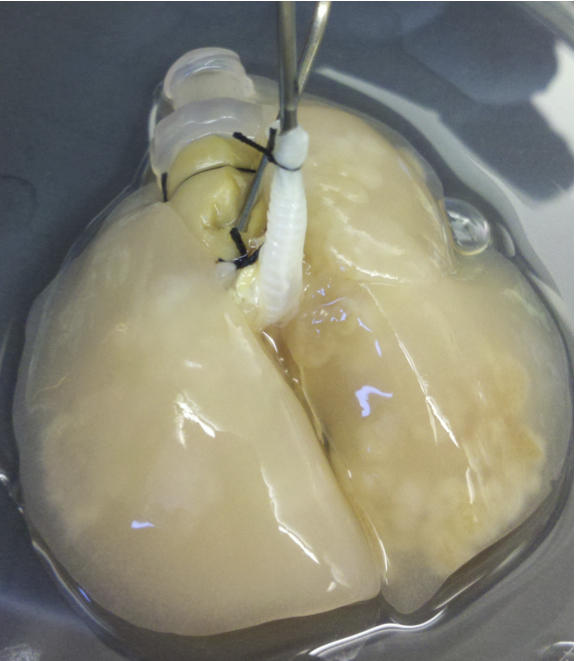
In a 3-D matrix, lung cancer cells form nodules ? something they do not do in traditional 2-D in vitro models (credit: Laboratory of Dr. Min Kim)
Using a new technique that allows scientists to grow lung cancer cells in three dimensions,?researchers at?The Methodist Hospital?and the University of Texas MD Anderson Cancer Center have?created?a model that?uses biological matter to form miniature lungs that mimic the structure and function of real lung cancer, after which human lung cancer cells are added.
The model?could accelerate discoveries for a type of cancer that has benefited little from scientific research over the last several decades.
?We found that the 3-D model we devised worked in most respects much better than 2-D models currently being used in lung cancer research,? said Min Kim, M.D., the study?s principal investigator.
The Methodist-MD Anderson model uses a rat lung ?matrix,? a framework created after the rat lung cells have been chemically removed. This translucent matrix is then infused with human lung cancer cells derived either from a patient or from a cell line. The cells that stick to the matrix are allowed to grow in nutrient rich, oxygenated broth that moves into and out of the lung space.
Mishra and his co-authors found that unlike the 2-D model, their 3-D model allowed the lung cancer to form ?nodules,? something a cancer does naturally in living tissue. The nodules are believed to play a crucial role in the cancer?s growth and metastasis.
The 2-D model produced an unnaturally high number of cells if left alone, whereas cell growth in the 3-D model provided more realistic cell growth and programmed cell death. The 3-D model also coaxed meaningful growth with preserved vasculature for inflow of nutrients and cells after four and six days showed signs of interacting with each other (also a natural phenomenon). Cells in the 2-D model simply grew haphazardly to fill spaces.
The 3-D model also produced more matrix metalloproteinases, a family of enzymes that researchers believe are required for lung cancer cell growth. Other important gene products, caspase-3 and ki-67, were also measured at higher levels in the 3-D model.
?New models for lung cancer research are crucial because current models frequently do not correlate with the findings of human trials. The challenge is creating a model that we can study that can accurately predict what will happen in patients with lung cancer.?
Scientific advances aiding the understanding and treatment of lung cancer have been limited and slow relative to breast and prostate cancers, among others. In 1975, the five-year survival rate for patients diagnosed with lung cancer was 13 percent. In 2005 (the most recent year for which reliable data are available), that survival rate had only increased to 16 percent.
?The lack of progress in finding effective treatments for lung cancer may be due, in part, to the lack of an accurate model that mimics the biological processes that occur in patients with lung cancer,? said Dhruva Mishra, Ph.D. the paper?s first author.
?
References:
- Dhruva K. Mishra, Jason H. Sakamoto, Michael J. Thrall, Brandi N. Baird, Shanda H. Blackmon, Mauro Ferrari, Jonathan M. Kurie, Min P. Kim, Human Lung Cancer Cells Grown in an Ex Vivo 3D Lung Model Produce Matrix Metalloproteinases Not Produced in 2D Culture, PLoS ONE, 2012, DOI: 10.1371/journal.pone.0045308 (open access)
Source: http://www.kurzweilai.net/3d-model-for-lung-cancer-mimics-the-real-thing
hitch justin beiber lamar odom perfect game jon jones vs rashad evans results justin bieber rashad evans
No comments:
Post a Comment
Note: Only a member of this blog may post a comment.